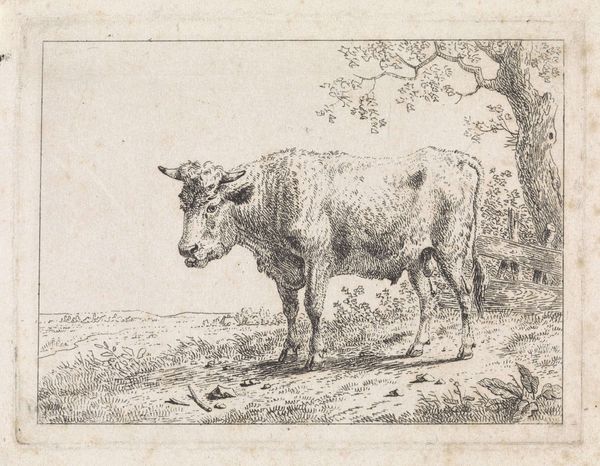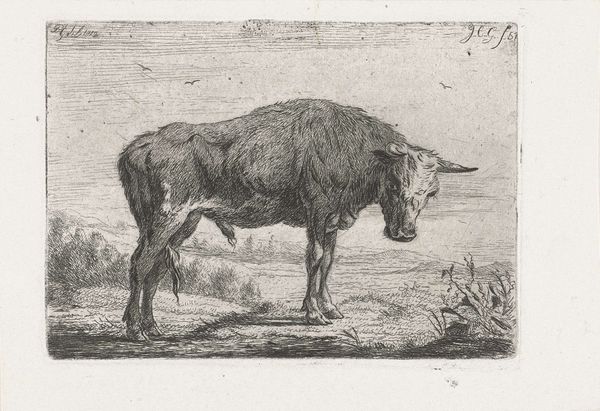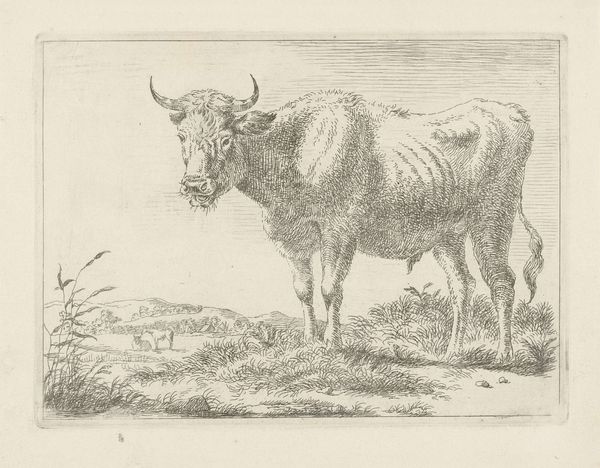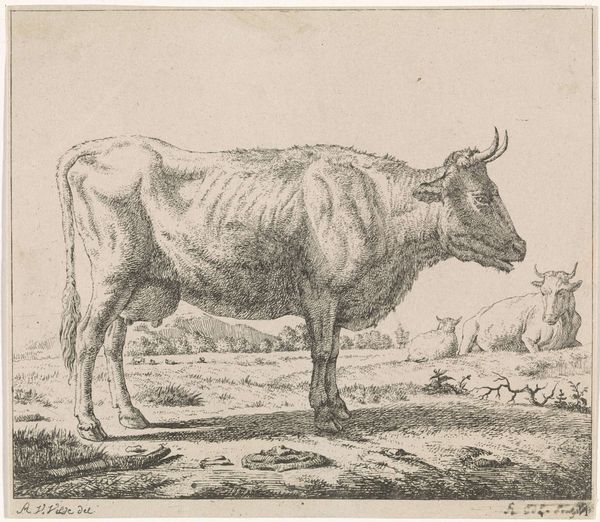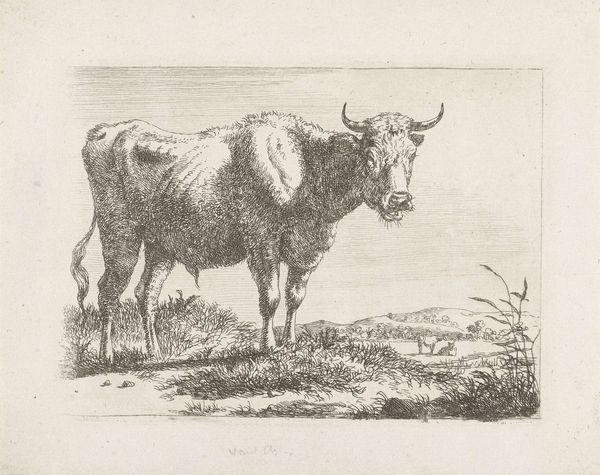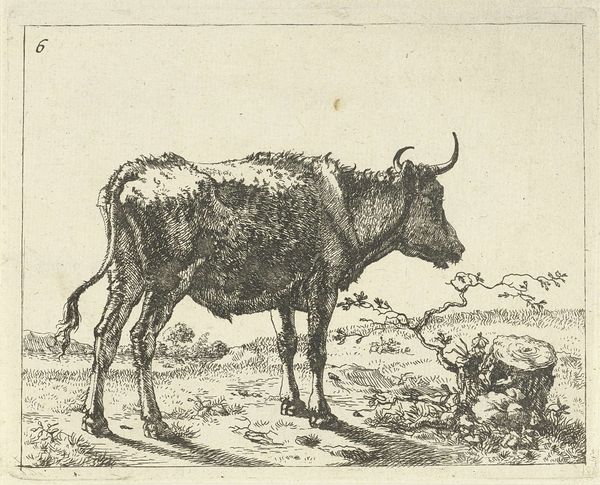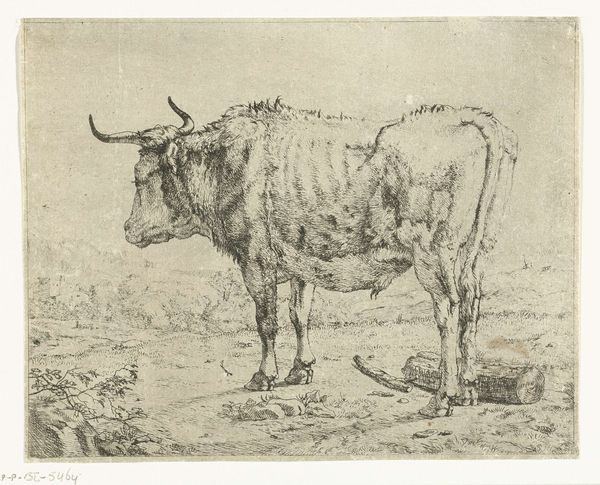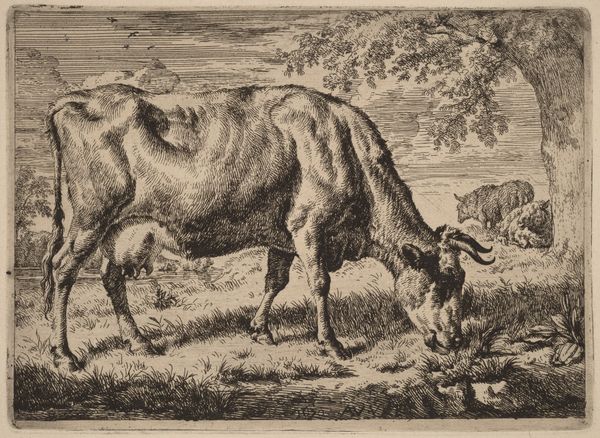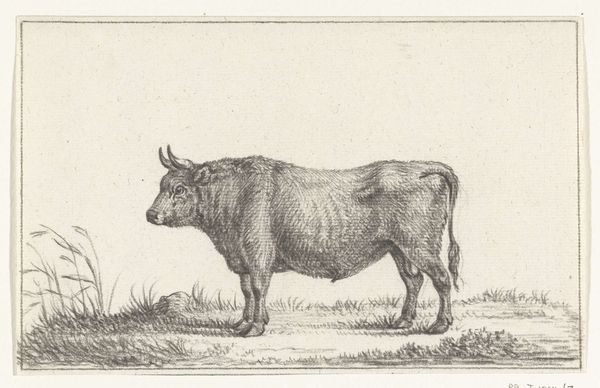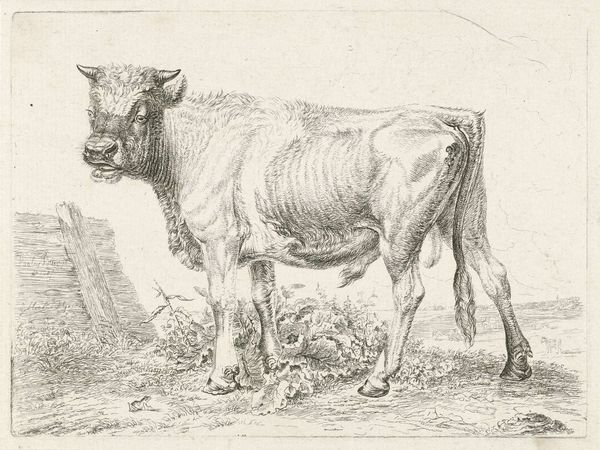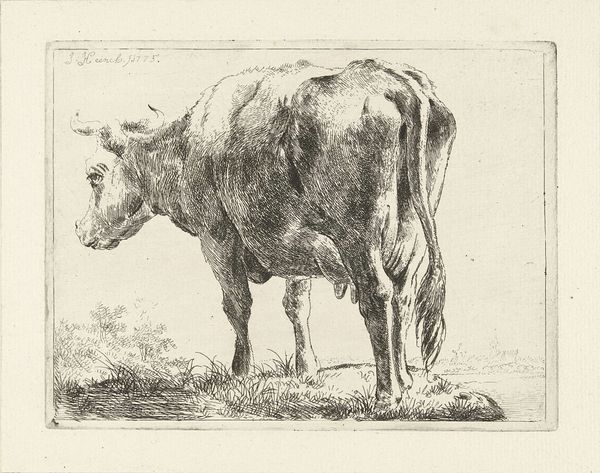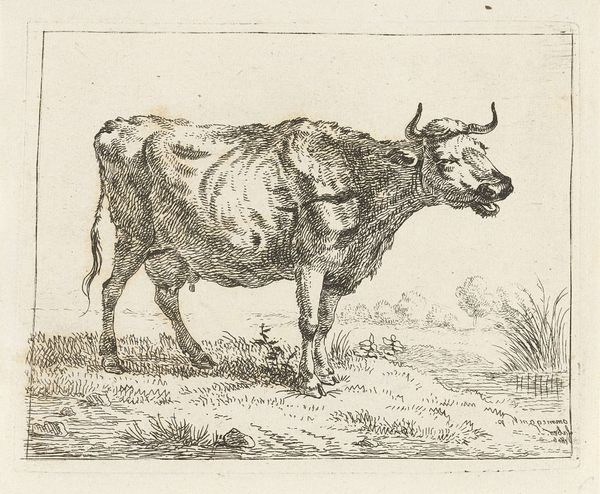
drawing, print, etching
#
pencil drawn
#
drawing
#
amateur sketch
#
light pencil work
#
dutch-golden-age
# print
#
pen sketch
#
etching
#
pencil sketch
#
landscape
#
figuration
#
personal sketchbook
#
pen-ink sketch
#
pen work
#
sketchbook drawing
#
pencil work
#
realism
Dimensions: height 100 mm, width 110 mm
Copyright: Rijks Museum: Open Domain
Curator: Before us, we have "Standing Cow," an etching attributed to Govert Dircksz. Camphuysen, likely created sometime between 1640 and 1672. Editor: My first thought is the simple rustic charm of this image. There's a sense of tranquility, even a quiet dignity, in how the cow is presented. It reminds me of pastoral scenes from old fables. Curator: I am struck by the texture achieved through the etching process. The artist skillfully uses cross-hatching and varying line weights to simulate the cow's hide, the rough bark of the tree behind it, and the grassy terrain. Look at how the varying depth of the lines create shadows, defining the form and creating volume from the print medium. Editor: Yes, the tree right behind the cow’s head creates an interesting contrast. Trees often represent life, nourishment, the great Mother, while cows stand for nurture, grounded abundance, placidity. Together, a combined image of idyllic existence comes forward. Curator: Indeed, cows in the Dutch Golden Age landscape imagery spoke to the prosperity derived from agriculture and dairy production. The burgeoning merchant class saw these tranquil images as a mirror of their own success and connection to the land that sustained them. Also consider the materials themselves: The ink, paper, and the labor involved in creating the printing plate, were a part of a burgeoning market that allowed these images to spread more broadly. Editor: It’s hard not to also see the deeper cultural connotations of the bovine image. Hathor, the ancient Egyptian deity; Io of Greek myth, transformed into a heifer...these resonate subtly through this unpretentious depiction of a single farm animal. A humble animal, yet a wealth of accumulated meanings. Curator: The widespread dissemination of images like this also began to redefine how people perceived and interacted with animals. The rising urban population saw cows less as livestock and more as a picturesque part of the rural landscape. This touches on broader economic and societal shifts, where rural aesthetics began to appeal to urban consumers, as print media expanded into the domestic sphere. Editor: Reflecting on it now, what appears as a straightforward image has roots branching deeply into symbolic reservoirs. Curator: Absolutely. The material conditions of art production, coupled with the symbolic power of everyday images, gives us valuable insight into Dutch culture of this period.
Comments
No comments
Be the first to comment and join the conversation on the ultimate creative platform.
